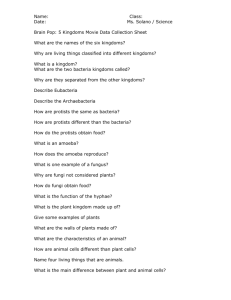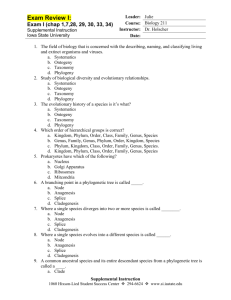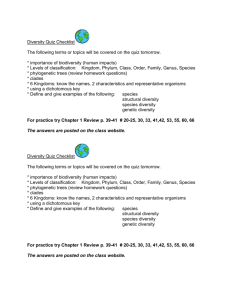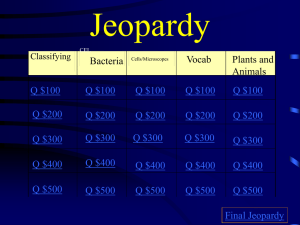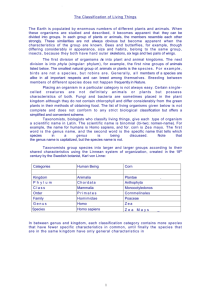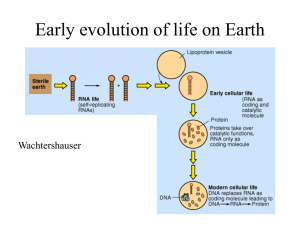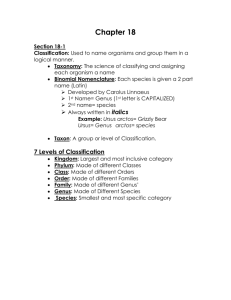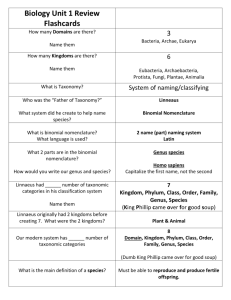Diversity & Classification in One Page:
advertisement
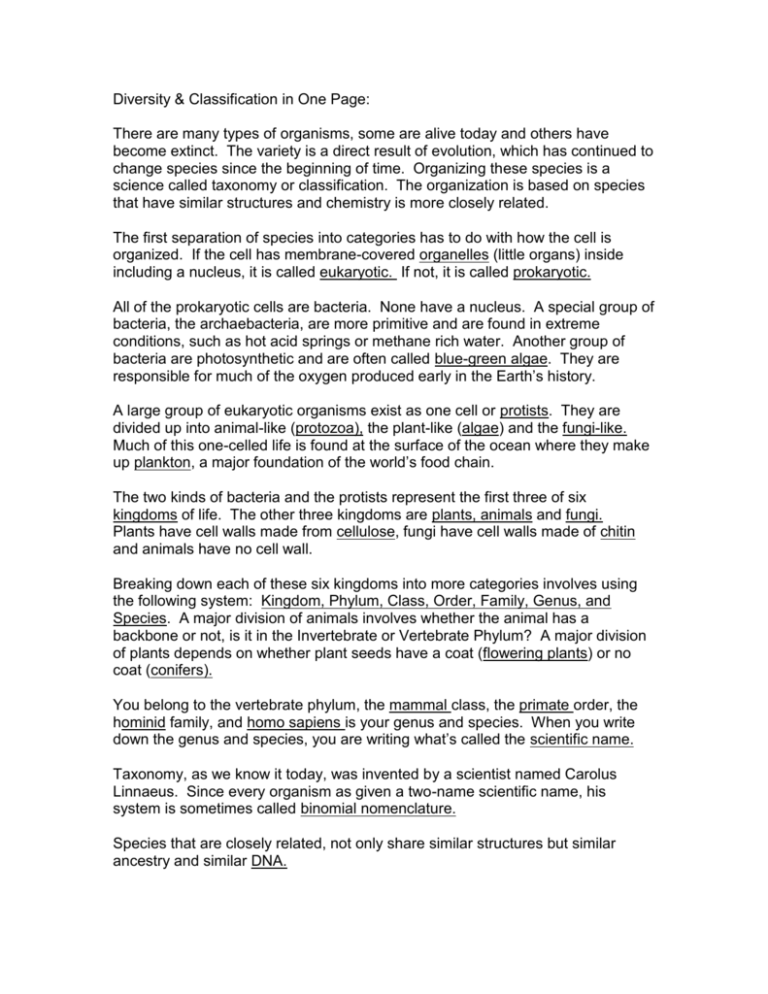
Diversity & Classification in One Page: There are many types of organisms, some are alive today and others have become extinct. The variety is a direct result of evolution, which has continued to change species since the beginning of time. Organizing these species is a science called taxonomy or classification. The organization is based on species that have similar structures and chemistry is more closely related. The first separation of species into categories has to do with how the cell is organized. If the cell has membrane-covered organelles (little organs) inside including a nucleus, it is called eukaryotic. If not, it is called prokaryotic. All of the prokaryotic cells are bacteria. None have a nucleus. A special group of bacteria, the archaebacteria, are more primitive and are found in extreme conditions, such as hot acid springs or methane rich water. Another group of bacteria are photosynthetic and are often called blue-green algae. They are responsible for much of the oxygen produced early in the Earth’s history. A large group of eukaryotic organisms exist as one cell or protists. They are divided up into animal-like (protozoa), the plant-like (algae) and the fungi-like. Much of this one-celled life is found at the surface of the ocean where they make up plankton, a major foundation of the world’s food chain. The two kinds of bacteria and the protists represent the first three of six kingdoms of life. The other three kingdoms are plants, animals and fungi. Plants have cell walls made from cellulose, fungi have cell walls made of chitin and animals have no cell wall. Breaking down each of these six kingdoms into more categories involves using the following system: Kingdom, Phylum, Class, Order, Family, Genus, and Species. A major division of animals involves whether the animal has a backbone or not, is it in the Invertebrate or Vertebrate Phylum? A major division of plants depends on whether plant seeds have a coat (flowering plants) or no coat (conifers). You belong to the vertebrate phylum, the mammal class, the primate order, the hominid family, and homo sapiens is your genus and species. When you write down the genus and species, you are writing what’s called the scientific name. Taxonomy, as we know it today, was invented by a scientist named Carolus Linnaeus. Since every organism as given a two-name scientific name, his system is sometimes called binomial nomenclature. Species that are closely related, not only share similar structures but similar ancestry and similar DNA.
